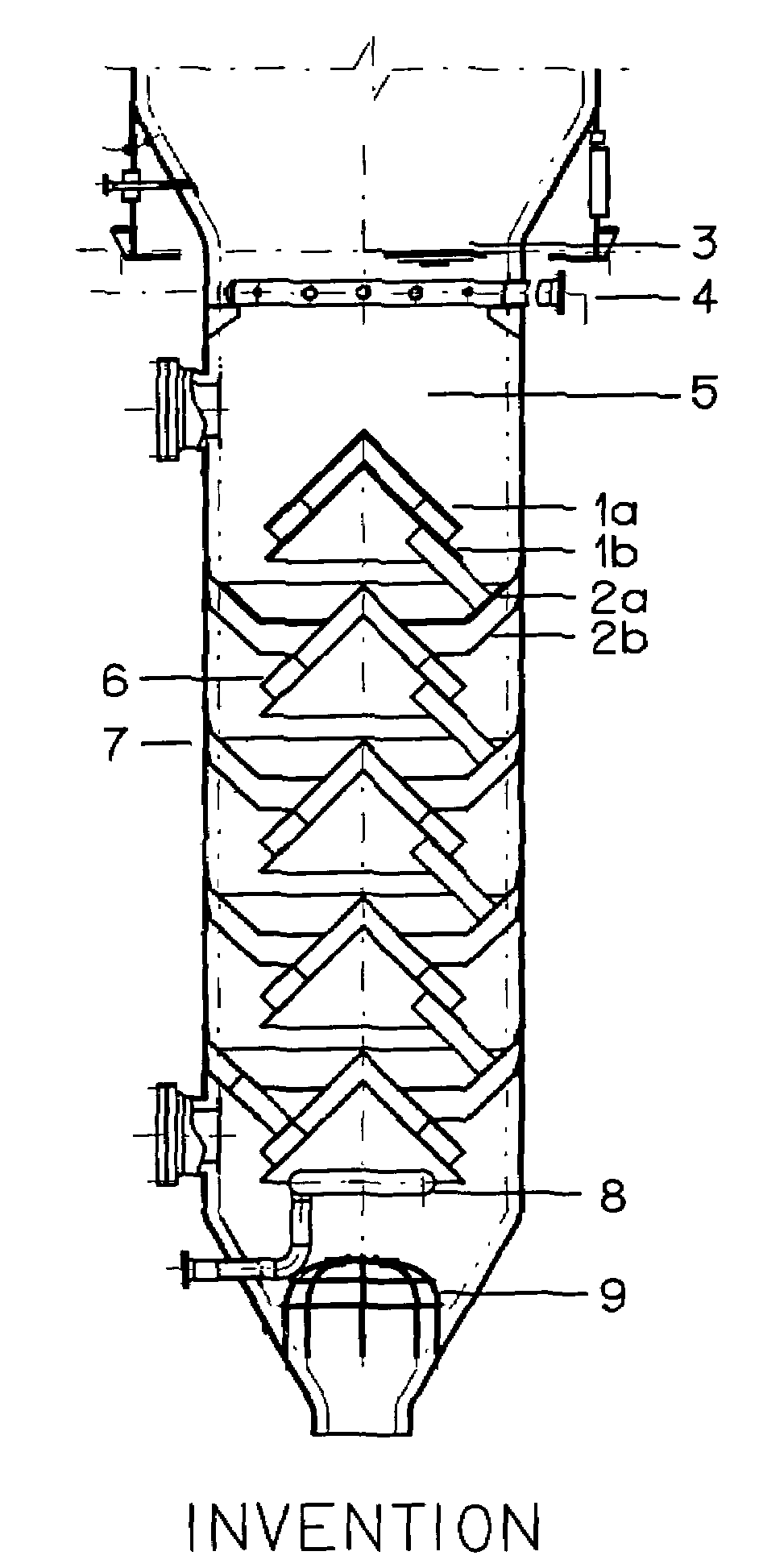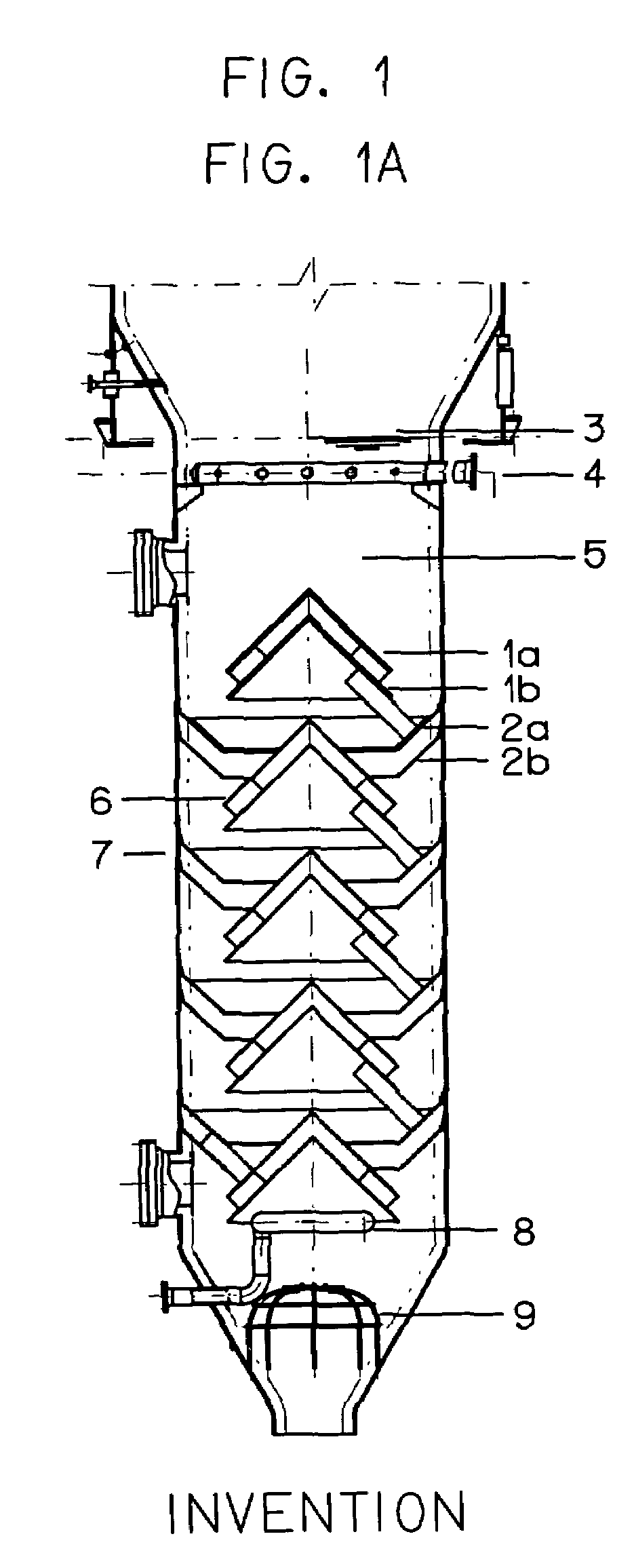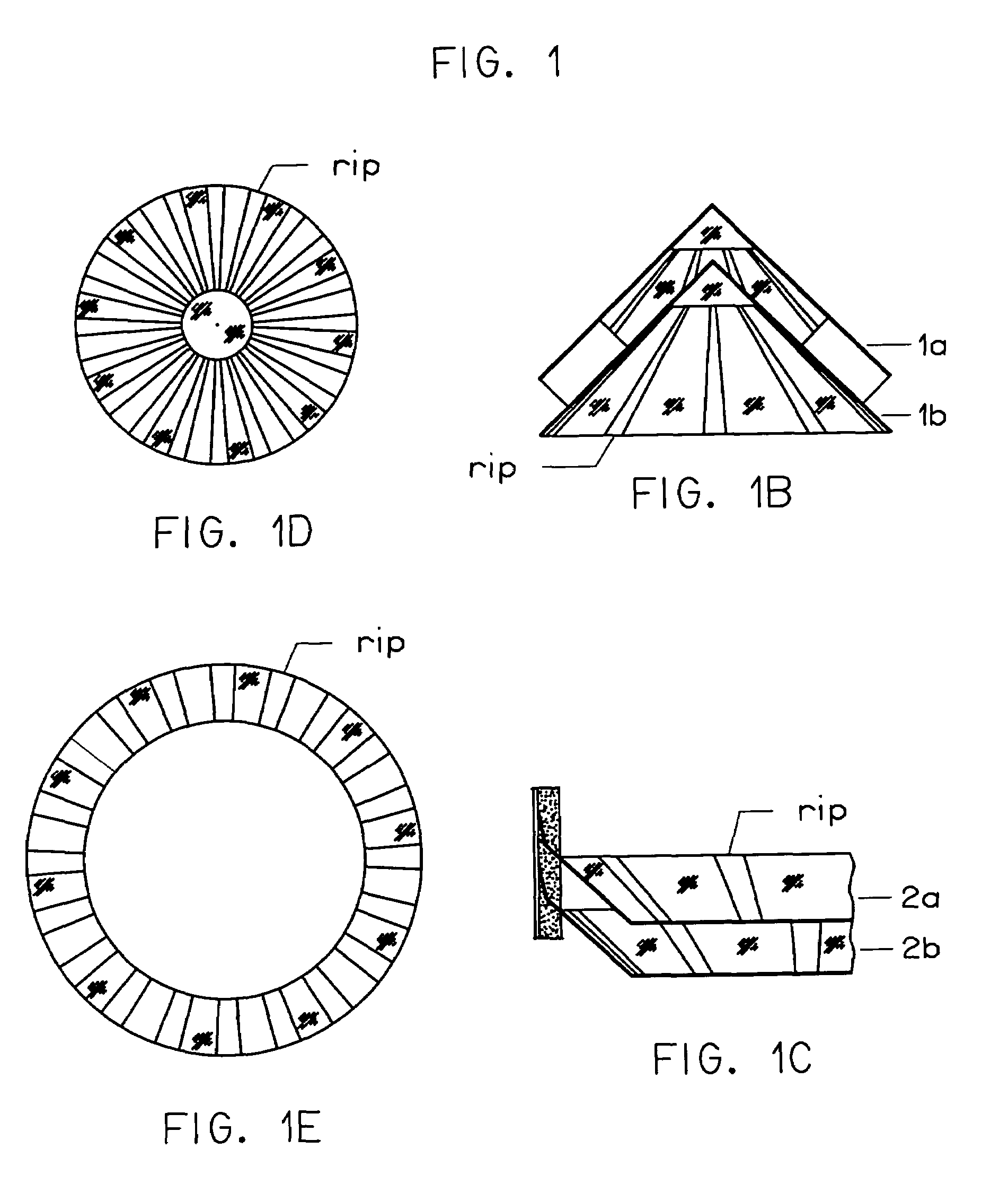Stripping apparatus and process
a technology of stripping apparatus and process, applied in the direction of lighting and heating apparatus, separation process, furnace, etc., can solve the problems of product waste, loss of conversion and valuable product yield, and possible reaction of dealkylation and condensation, so as to prevent stagnation zones
- Summary
- Abstract
- Description
- Claims
- Application Information
AI Technical Summary
Benefits of technology
Problems solved by technology
Method used
Image
Examples
Embodiment Construction
[0029]One aspect of the present invention is an apparatus for stripping hydrocarbons adsorbed on fluidized solid particles, such as spent catalysts used in a FCC unit.
[0030]A further aspect of the invention is a stripping process for stripping such adsorbed hydrocarbons from fluidized solid particles such as those of a spent catalyst used in a FCC unit.
[0031]At the end of the riser, it is important to make a quick separation between the catalyst and the product vapors. This will minimize cracking reactions in the reactor vessel. The current state-of-the-art in riser terminations is closed cyclones. These systems minimize reactor dilute phase residence time by connecting the riser cyclone outlets directly to the inlets of the reactor cyclones. Catalyst from the cyclones flows directly into the reactor bed. This catalyst flow does, however, carry some product vapors into the bed. These vapors are recovered in the stripper.
[0032]As generally represented in FIG. 1A, a stripper apparatus...
PUM
| Property | Measurement | Unit |
|---|---|---|
| angle | aaaaa | aaaaa |
| angle | aaaaa | aaaaa |
| temperature | aaaaa | aaaaa |
Abstract
Description
Claims
Application Information
 Login to View More
Login to View More - R&D
- Intellectual Property
- Life Sciences
- Materials
- Tech Scout
- Unparalleled Data Quality
- Higher Quality Content
- 60% Fewer Hallucinations
Browse by: Latest US Patents, China's latest patents, Technical Efficacy Thesaurus, Application Domain, Technology Topic, Popular Technical Reports.
© 2025 PatSnap. All rights reserved.Legal|Privacy policy|Modern Slavery Act Transparency Statement|Sitemap|About US| Contact US: help@patsnap.com



